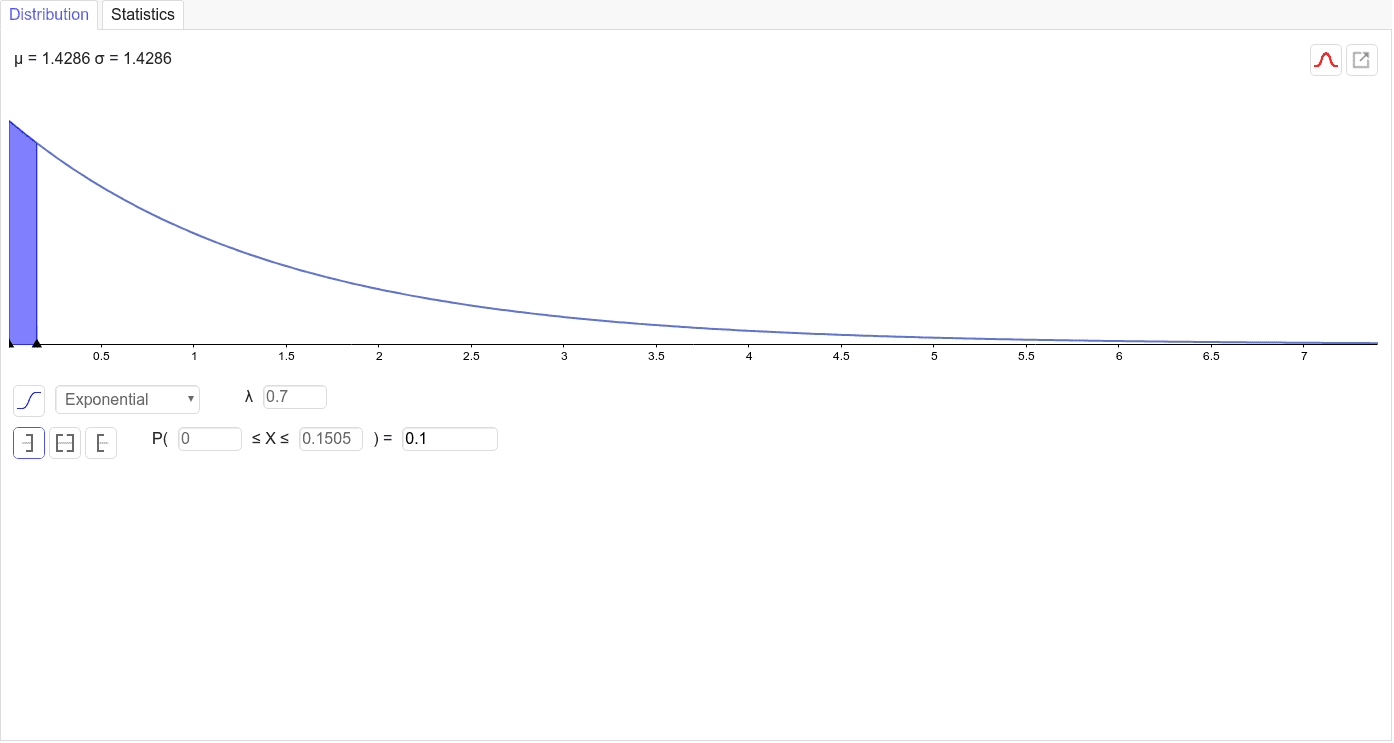

With 15 iterations this percentage increases to almost 70%. Moreover, in 60% of the cases the λ that is calculated with 10 iterations approaches the final value with a difference of less than 1%. For example, for the hailpads chosen, with five iterations λ takes a value that differs from the final value (the one it will supposedly reach with infinite iterations), which is less than 5% in 60% of the cases. In addition, not too many iterations are necessary to obtain acceptable results. The result shows that in all cases the inequality persists, thus, demonstrating that the iteration function is useful, at least in the examples described. (14) applies to the examples suggested (hailstone and drop size), we have applied this equation to hail data that are registered during a summer campaign in the hailpad network of León (Spain) and to the distributions of hydrometeors measured inside convective clouds by means of an optical array probe (OAP) 2D2-C ( Sánchez et al. To assess the extent to which the convergence criterion in Eq. In this case, hailstones larger than 5 mm have been measured, and, consequently, an extension of this method was used, as described in section 2b. 1 it can be compared with the exponential function that is obtained from calculating λ with the moment method.

This is the usual result when this method is applied to calculate λ ( Fraile et al. These points will be farther away from the exponential curve for the lower values of x i.

This fact can be illustrated graphically when representing an exponential distribution with the value λ calculated in the way described above, together with the data points ( x i, y i) from which λ has been estimated. In consequence, the fit is better for the points with a higher x i value. In addition, because w i is a growing exponential function, more weight is assigned to the higher values of x i. What does this mean? It simply refers to the fact that transforming an exponential distribution into a linear function to subsequently estimate the parameters of the line by means of the least squares fit is broadly equivalent to applying the least squares fit to the exponential function with a different weight assigned to each point ( x i, y i). (2) introduces a bias, and to offer an alternative way for calculating λ parameter in an exponential distribution. The aim of this paper is both to demonstrate that the least squares fit of the straight line in Eq. If one part of the spectrum needs to be highlighted, an appropriate weight should be established for it, but not the weight that a particular fitting method may introduce. However, if the aim is to calculate size distributions, it is necessary to employ a method that applies equally to the whole size spectrum. This may award greater importance to the larger sizes of the spectrum. Similarly, the largest hydrometeors are also the ones that contribute more importantly to the reflectivity factor, because this factor depends on the sixth power of the diameter of the drops. (2004) have also noticed these problems in measuring hailstones.įurthermore, it is well known that in microphysical measurements the largest particles are more important in estimating the liquid water content, because this parameter is proportional to the cubed diameter of the drop. (1998) have pointed out some of these indeterminacies in measuring the number of small hydrometeors with an Optical Array Probe 2D2-C. For instance, the hydrometeors may not reach the lower threshold, or the problems may be the result of the method, the resolution of the equipment, overlapping, etc. These problems are the result of a number of different causes. (2) places more importance on the larger sizes.įrom an experimental perspective, there are instrumental problems when accurately measuring the smallest hydrometeors. These authors have also noted that, even if there are no empty size groups, the least squares fitting of the straight line in Eq. (2) for determining λ by the least squares fit because if N = 0, ln N makes no sense. (1992) have noted that in this case it is not possible to use Eq. Because the distribution is exponential, it may happen that in the larger sizes some of the classes are empty. (1) represents the number of drops with a size of approximately t, which means that all of the drops in the sample have to be grouped into classes. In the second case, the value of N in Eq.


 0 kommentar(er)
0 kommentar(er)
